Evolutionary Ecology
The department of Evolutionary Ecology gathers complementary skills in behavioural ecology, population dynamics, population biology, community ecology, and methodology (statistics and modelling). The research done in the department aims at studying how animal species evolve in a changing world by understanding the causes of the evolution of traits, adaptations and interactions. For that, we consider different levels of organization from individuals to populations and communities. Because organisms cannot be considered isolated from other biotic factors, we consider pathogens but also competing species within communities.
We study how individuals adapt to their environments that are largely impacted by anthropic pressures, and how life history traits and behaviour evolve in response to these pressures. Although we mainly focus on phenotype, we more and more consider the mechanistic link between the genotype and the phenotype. We develop the theoretical framework of our discipline through a conceptual and modeling approach. In parallel, we test hypotheses that arise from theoretical predictions through experimental, comparative and observational approaches on different biological models (insects, birds, mammals). Experimental approaches are developed in the laboratory (insect model) and in natura (bird, insect and mammal models). Observational and comparative research is mainly concerned with vertebrates. Our approaches are also, and increasingly, interested in the mechanisms of adaptive responses. In addition to the classical approaches of demographic analysis and trait change, methods of ecophysiology, chemical ecology and molecular biology are used.
Our department hosts several long-term studies of wild populations of different species. These long-term studies offer a valuable way to understand how biotic and abiotic factors affect individuals’ life history traits, and the functioning of populations in natura. Five populations of mammalian species are thus monitored for several years (more than 40 years on roe deer, 30 on Alpine marmots, 25 years on cats, 16 years on zebras, and 20 years on impala). Two of our study sites (La Sassière in Vanoise National Park (Alpine marmots) and Hwange National Park) have been certified as “Site d’Etude en Ecologie Globale” (SEEG), and two (ZA “Hwange” and ZA “Antarctic and sub-Antarctic”) were certified as “Zone Atelier” by the CNRS.
The department of Evolutionary ecology is also largely involved in training activities. Lastly, we also have strong socio-economic relationships. Indeed, because we address questions of major societal interest (global warming, public health) we tightly collaborate with socio-economic partners (Office Français de la Biodiversité, Vanoise National Park, Hwange National Park in Zimbabwe, Office National des Forêts, etc.) and participate to general public and media events.
Publications
Display of 121 to 150 publications on 2455 in total
Projet DS2 : Drosophila suzukii « Développer des Stratégies de gestion efficaces, économiquement viables et durables »
Innovations Agronomiques . 94 : 127-140
Journal article
see the publicationAvis de l’Anses relatif aux « modalités de surveillance et de lutte contre la brucellose des bouquetins dans les massifs du Bargy et des Aravis»
: 36 p.
Report
see the publicationRisk of further EHDV introduction in Europe
17. International Symposium on Veterinary Epidemiology and Economics .
Poster
see the publicationfitdistrplus: Help to Fit of a Parametric Distribution to Non-Censored or Censored Data
Software
see the publication(Epi)mutation Rates and the Evolution of Composite Trait Architectures
The American Naturalist . 204 ( 3 ) : E42-E56
DOI: 10.1086/731461
Journal article
see the publicationWildlife diseases: a framework to prioritise targeted surveillance
15th European Wildlife Disease Conference .
Conference paper
see the publicationSons Shorten Mother’s Lifespan in Preindustrial Families with a High Level of Infant Mortality
The American Naturalist . 204 : 315 - 326
DOI: 10.1086/731792
Journal article
see the publicationBody mass change over winter is consistently sex-specific across roe deer (Capreolus capreolus) populations
Peer Community In Ecology . 4 : e98
Journal article
see the publicationResponse of a carnivore community to water management in a semi-arid savanna
Biological Conservation . 299 : 110777
Journal article
see the publicationÉtude du retour de la Loutre d'Europe Lutra lutra (Linnaeus, 1758) sur le fleuve Lez (fleuve côtier, Hérault, France) grâce aux méthodes non-invasives de suivi des populations et une collaboration étroite entre structures académiques et territorial
Preprint
see the publicationHaemolysis overestimates plasma oxidative stress biomarkers in free-ranging roe deer
Comparative Biochemistry and Physiology - Part A: Molecular and Integrative Physiology . 298 : 111750
Journal article
see the publicationWeather and hunting efficiency: Unraveling the factors impacting wild boar drive hunting
European Journal of Wildlife Research . 70 : 104
Journal article
see the publicationBioaccumulation, organotropism and fate of cadmium in Gammarus fossarum exposed through dietary pathway
Journal of Hazardous Materials . 480 : 135965
Journal article
see the publicationMulti-host modelling of brucellosis at the wildlife-livestock interface in the French Alps
15th European Wildlife Disease Conference .
Poster
see the publicationÉvaluation des risques liés aux helminthoses digestives chez le chien et le chat
Le Point vétérinaire . ( 457 ) : 24-29
Journal article
see the publicationTraitements des helminthoses digestives chez le chien et le chat
Le Point vétérinaire . ( 457 ) : 40-46
Journal article
see the publicationIntérêt et interprétation de la coproscopie chez le chien et le chat
Le Point vétérinaire . ( 457 ) : 30-38
Journal article
see the publicationÉvaluation des impacts sur la santé publique de la dynamique des populations de renards
Communications libres .
Conference paper
see the publicationEarly-life glucocorticoids accelerate lymphocyte count senescence in roe deer
General and Comparative Endocrinology . 357 : 114595
Journal article
see the publicationHow to solve novel problems: the role of associative learning in problem-solving performance in wild great tits Parus major
Animal Cognition . 27 ( 1 ) : 32
Journal article
see the publicationApproaches and methods to study wildlife cancer
Journal of Animal Ecology .
Journal article
see the publicationCleaning practices of transport vehicles by commercial and non-commercial livestock markets users in Scotland
Research in Veterinary Science . 180 : 105413
Journal article
see the publicationDOHaD: A Menagerie of Adaptations and Perspectives: Long-lasting effects of the presence of male siblings in utero on subsequent reproductive performance
Reproduction [Cambridge] . 167 ( 3 ) : e230049
DOI: 10.1530/rep-23-0049
Journal article
see the publicationade4: Analysis of Ecological Data: Exploratory and Euclidean Methods in Environmental Sciences
Software
see the publicationCommunity ionomics reveals a diversity of mineral nutrition in a species‐rich shrubland on infertile soil
Journal of Vegetation Science . 35 ( 5 ) : e13301
DOI: 10.1111/jvs.13301
Journal article
see the publicationWhy incorporate plant architecture into trait-based ecology?
Trends in Ecology & Evolution . 39 ( 6 ) : 524-536
Journal article
see the publicationMapping global orchid assemblages with deep learning provides novel conservation insights
Ecological Informatics . 81 : 102627
Journal article
see the publicationNew Automatic Identification Tools: An Aid for Botanists and Nature Managers ?
Linking with Nature in the Digital Age: Volume 1 - Communication, Environment, Science and Society SET . 9781786308580 ( 1 ) : 161-175
Book chapter
see the publicationRefocusing the microbial rare biosphere concept through a functional lens
Trends in Ecology & Evolution .
Journal article
see the publicationFactors associated with the spatiotemporal distribution of dog rabies in Tunisia
PLoS Neglected Tropical Diseases . 18 ( 8 ) : e0012296
Journal article
see the publication
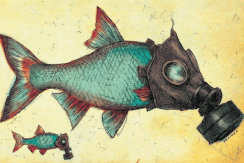
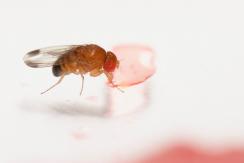
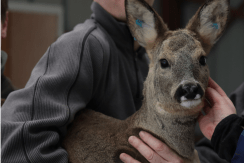
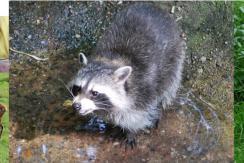
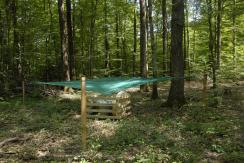
You also, comment on this article